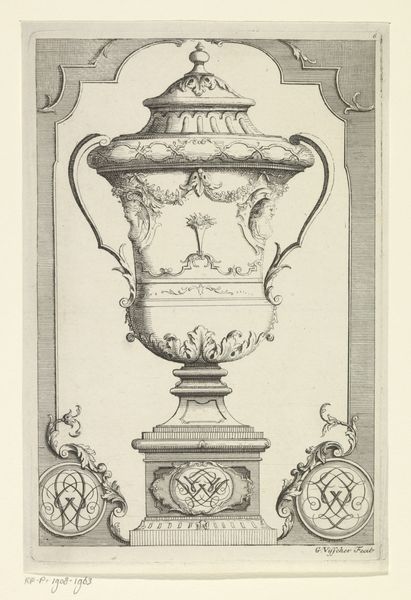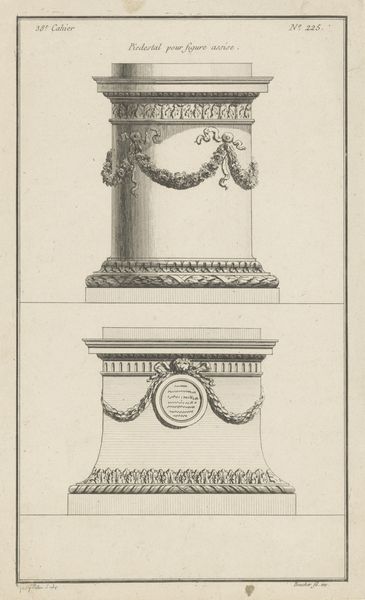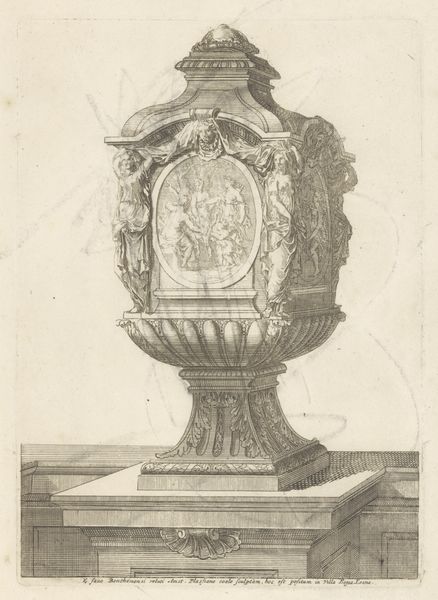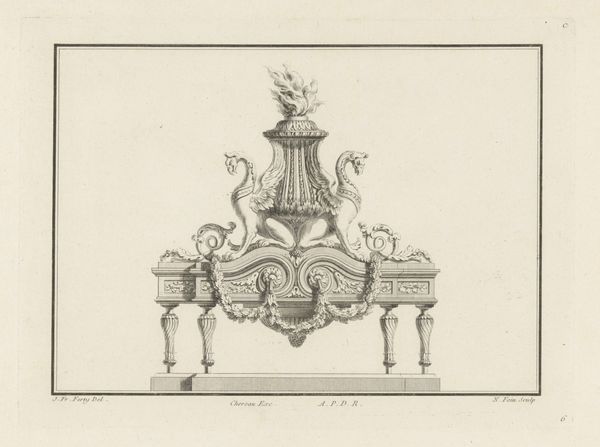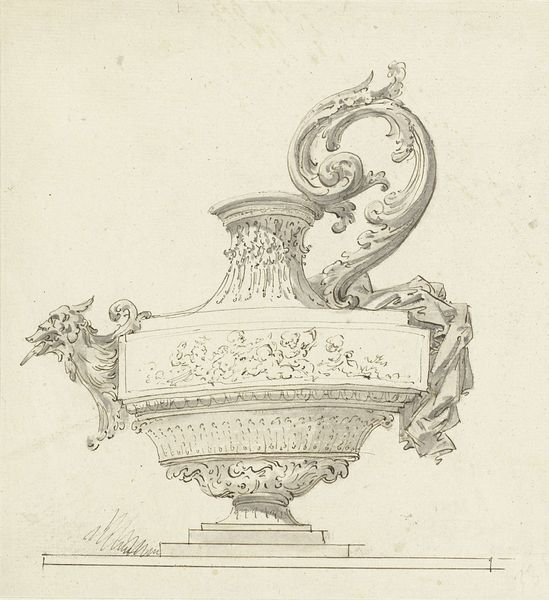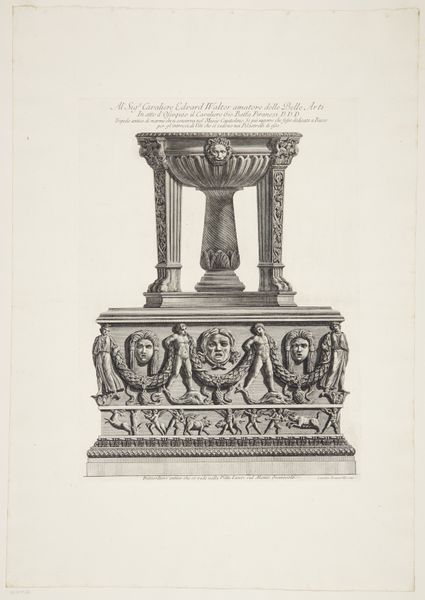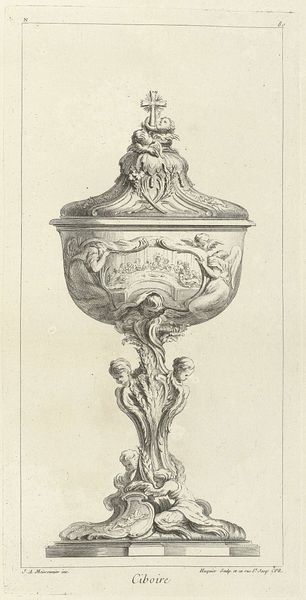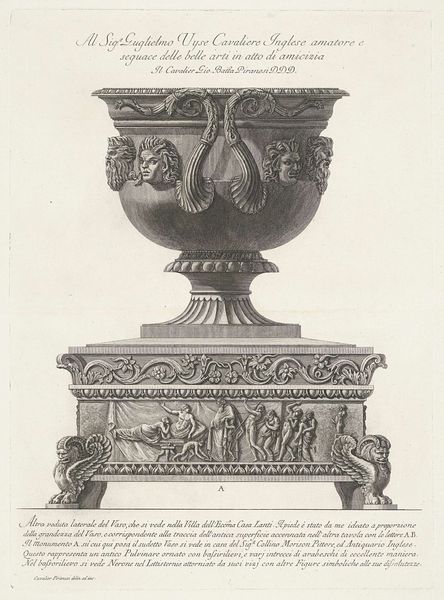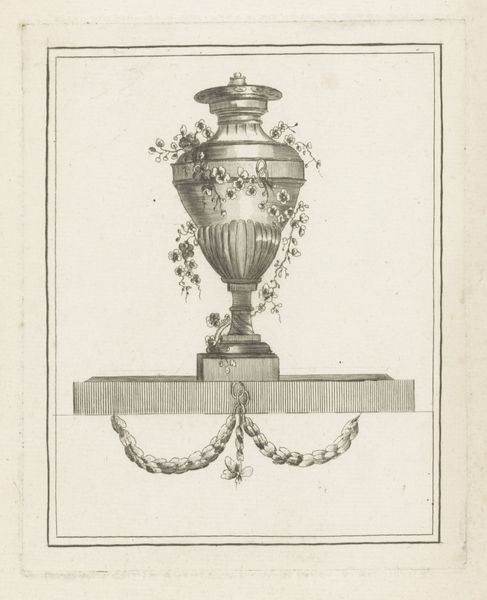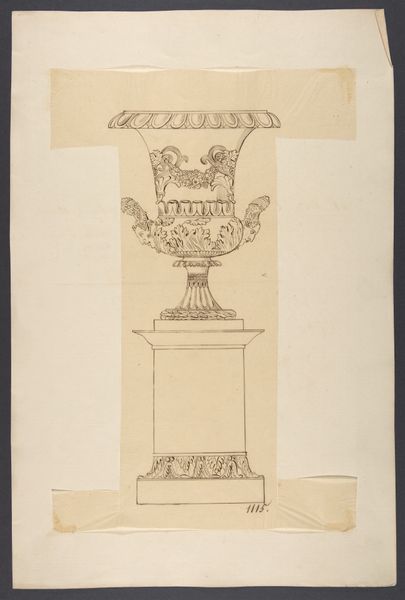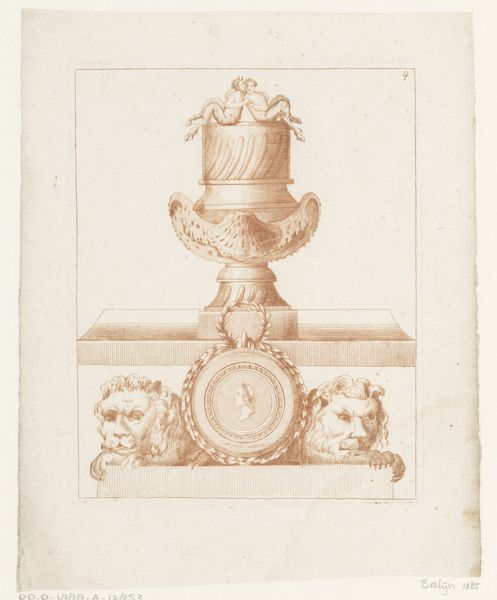
drawing, print, metal, engraving
#
drawing
#
neoclacissism
# print
#
metal
#
old engraving style
#
geometric
#
line
#
decorative-art
#
engraving
Dimensions: height 204 mm, width 282 mm
Copyright: Rijks Museum: Open Domain
Curator: Looking at "Vuurbok met vaas," or "Fire Dog with Vase," a late 18th-century engraving by Augustin Foin currently held in the Rijksmuseum, I'm immediately struck by the precision of line and form. It evokes such stillness and formality, like a carefully staged tableau. Editor: It gives off a rather stark vibe, wouldn't you say? All that rigid symmetry and ornamentation...I feel a definite sense of constraint. I mean, just look at the cold precision in the repeated patterns, the unwavering geometry that suggests a kind of...imposed order, perhaps from that time's aesthetic. Curator: Precisely. This was the era of Neoclassicism, after all, when there was a deliberate return to the aesthetics and implied social orders of ancient Greece and Rome, which are interesting starting points. Editor: Neoclassicism really speaks to this striving for order and structure, doesn't it? The vase, adorned with floral garlands, perched atop what seems to be some kind of fire grate...it reads like an allegorical staging of a perfect moment, untouched by time. Curator: Yes, but let's consider how this "perfect moment" was crafted, right down to the etching itself. The work involved in such detail…Foin, a master engraver, would've spent hours meticulously incising the metal plate. And where would this level of craft have been situated in 1790? Who was able to make use of it? It forces us to acknowledge the hidden labors behind this seemingly effortless vision of ideal beauty. Editor: Very true! We should consider that art from this period wasn’t produced in a vacuum. This imagery almost certainly reflected and influenced elite taste, shaping ideals of beauty and power. Its precise form communicated those values, intentionally or not, and served to reinforce certain social hierarchies that determined what “beauty” could mean at that moment. It's a complex relationship between the aesthetic and social power, isn’t it? Curator: It is. Even the print medium itself, the act of reproducing and disseminating these images… it speaks to consumption, access, the market for these refined objects, how those markets work. Editor: Exactly! It compels a deeper reading into the materials, into those who used and traded with them. What's depicted is an artificial creation of order, yet the creation of the drawing itself relied on the often disorderly world of labor. I guess I feel empowered in a small way by that fact, and that keeps my perspective alive. Curator: Absolutely. Viewing these works allows one to start an exchange. Editor: Well put.
Comments
No comments
Be the first to comment and join the conversation on the ultimate creative platform.
